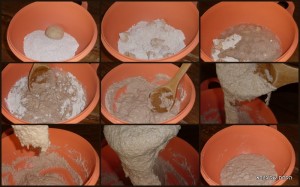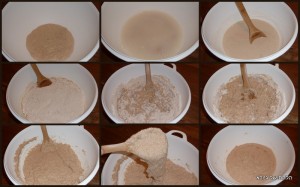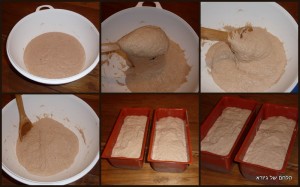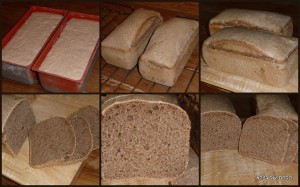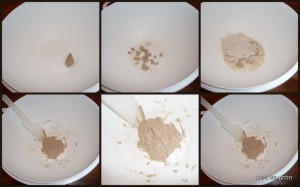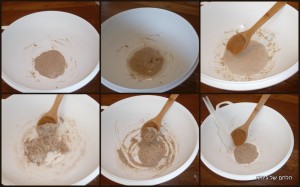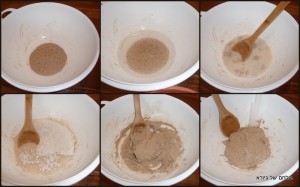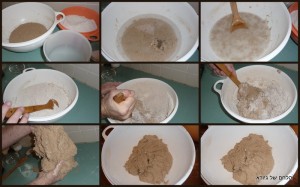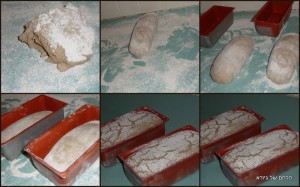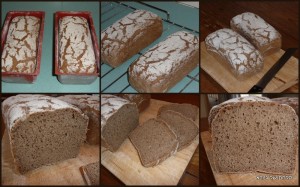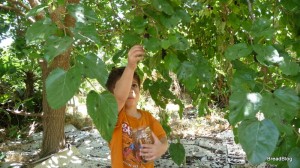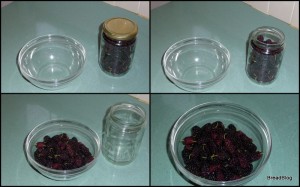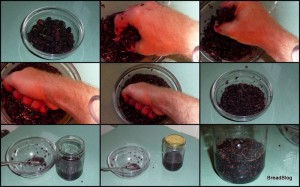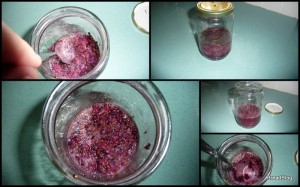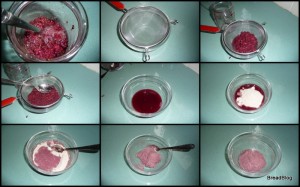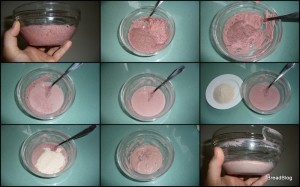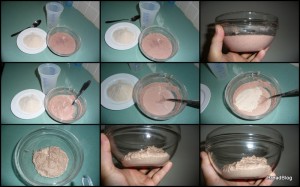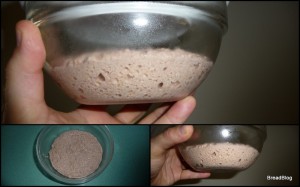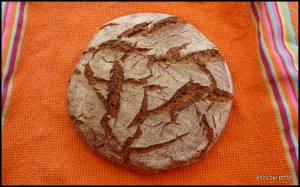Spelt is a relative of wheat, however unlike wheat it is low on gluten and is considered health food. Bread from spelt is very easy to prepare as it doesn’t require kneading as wheat bread does nor it requires lengthy preparations as rye bread. After many experiments, testing different hydration percentages and different shaping methods – at one point i was even doing spelt miches – i arrived at the formula and method that i want to share here. The resulting bread is a bit sour with good smell, soft and moist crumb and crunchy crust.
For two loafs we will use 1 kg of organic stone ground flour, 820 gr water and 18 gr salt. In baker percentages it is 82% hydration and 1.8% salt.
1. Mix well 4o gr of dry (60% hydration) sourdough with 200 gr spelt flour and 200 gr water and let rest for 10 – 12 hours. Cover the dough to prevent drying.
2. Add 620 gr water and 18 gr salt and mix well. We are not going to knead the dough so it is important to mix the salt well at this stage. Add 800 gr of flour and mix well. The dough is pretty loose. That is OK, it is because there is not enough gluten to absorb all the water that we added. Desired dough temperature is 25 C. Allow two – three hours of bulk fermentation.
3. Mix the dough again and fill two loaf pans. I use silicone 22 x 10 x 8 cm loaf pans. Silicone allows me to avoid use of oil in baking . Let proof until inflated at least 1.5 times.
4. When dough had risen well bake in hot oven at 250 C for 15 minutes and at 200 C for another 30 minutes. Because the dough is so soft we don’t score it – it will find a weak spot on the surface and burst out of it during oven spring.
5. Let cool for 8 – 10 hours before opening. Slice some bread for your family, spread goat butter on it and enjoy the flavor of this ancient freshly baked bread.
Notes:
- Spelt flour is reddish in color and when mixed with water has even stronger red shade.
- Spelt dough is always looser then wheat dough at the same hydreation. Adding more flour will not strengthen the dough until it is too dry. The loaf may look beautiful but have inferior flavor.
Reference:

